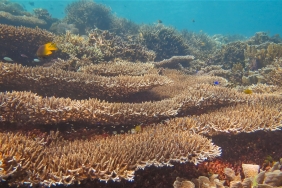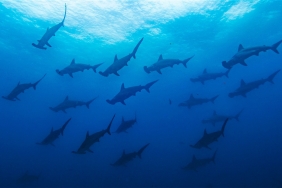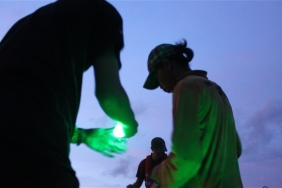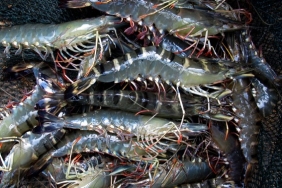RESURRECTING TAKALAR SEAWEED FARMING WITH RESPONSIBLE PRACTICES
Author: Ghamal Nasser Wahab (Local Facilitator of WWF-Indonesia's Aquaculture Fisheries Improvement Program in Bone - Takalar)
Seaweed farming is not new to the people of Takalar Regency, South Sulawesi. Takalar is one of the pioneering areas of Gracilaria seaweed cultivation in South Sulawesi. Since 1987, Takalar has grown as one of the largest producers of Gracilaria, ranking fifth after Luwu, East Luwu, North Luwu and Bone. However, now, Gracilaria cultivation in Takalar is facing various threats.
High water salinity and low production quality and quantity are problems experienced by Takalar farmers. This is exacerbated by irresponsible cultivation practices, and the ineffectiveness of group institutional mechanisms. In fact, groups can be a common platform for farmers to overcome various problems.
To address this, WWF-Indonesia together with Celebes Seaweed Group (CSG), a member of Seafood Savers based in South Sulawesi and engaged in the export of Gracilaria seaweed, conducted Better Management Practices (BMP) Training on Gracilaria Cultivation for Takalar farmers. This activity is the first step in a series of Aquaculture Improvement Programs aimed at improving production quality and ensuring aquaculture practices can be carried out in an environmentally friendly and responsible manner.
A total of 25 participants attended the two-day training at the CSG Takalar Warehouse, October 18-19. They were pond owners, pond technicians, and representatives from the Marine Fisheries Office and the Takalar District Agriculture, Fisheries and Forestry Extension Agency (BP4K).
In the class, participants received material on Good Fish Cultivation Methods (CBIB) from Syamsuddin Dg. Serang (Takalar Regency Marine and Fisheries Service); Improving the Quality of Gracilaria According to Industry Needs by Asdar Marzuki (Celebes Seaweed Group); Gracilaria Cultivation BMPs by Muh. Yusuf (WWF-Indonesia); and Strengthening Pond Groups by Hasyim (BP4K Takalar Regency).
The materials addressed basic issues that strengthen their capacity as farmers. For Gracilaria BMP, the materials covered institutional aspects, legality, cultivation preparation, construction and planting, nursery, water management, pests and diseases, harvest and post-harvest management, social aspects, and strengthening monitoring.
Meanwhile, CBIB is needed to encourage the practice of biosecurity or preventive measures against diseases. CBIB guarantees food safety in the form of sanitation discipline, and pays attention to consumer comfort and safety from pre-production to distribution.
Asdar Marzuki explained more about the quality requirements of seaweed needed by the industry. Starting from a minimum length of maintenance for 45 days, a moisture content of around 15%, and a dirt content of 3%. These requirements are to optimize gel content, prevent fermentation, and ensure contamination free.
Hasyim, a fisheries extension worker from BP4K, explained a lot about the importance of farmers joining groups. By joining groups, farmers also have easy access to technical cultivation information, market information, and programs from the local government. That day, farmers also visited Gracilaria ponds to observe the cultivation process and practice water quality measurement methods.
"The Takalar Regency Government strongly supports every effort to develop the seaweed industry in this region. We hope that all participants can benefit as much as possible," said Syamsuddin Dg. Serang, a representative of the Takalar Regency Marine and Fisheries Service. This hope was shared by all Gracilaria farmers present, while looking forward to the next meeting to learn more about the use of technology in Gracilaria cultivation.





